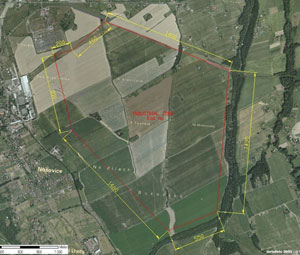EUROPEAN AUTOMOTIVE INDUSTRY
Western Europe: Automotive Isn't Dead
As some industry watchers predict the death of automotive manufacturing in Western Europe, the reality is a bit more nuanced. Automotive news from Western Europe today is less about new
 |
| The chosen site in Nosovice, Czech Republic, for Hyundai's planned $1.2-billion manufacturing plant. A formal agreement is expected to be signed in May 2006. |
Western European nations like France, Belgium and Germany are attempting to address some of the issues that make them less competitive. But despite changes that are introducing new flexibility into rigid labor laws and creating more business-friendly environments, some companies are ignoring Western European options altogether. "Many of our clients in automotive-related businesses are not even willing to consider Western Europe. Their question is simply 'Where in Eastern Europe should we go?' " notes Spee.
The situation poses an enormous challenge for countries like Germany, which has made some impressive strides towards encouraging new foreign direct investment. "Germany definitely has a perception problem," Spee says. He notes progress in the increased flexibility to hire and fire workers, and new tax deductions. Coupled with Germany's well-deserved reputation for engineering excellence, the new concessions spell opportunity for companies who need a highly technical work force.
A new World Bank report documents the technology and innovation gaps that remain in Central and Eastern European nations, compared to their Western European counterparts. Nations that have embraced market economies the longest and where foreign activity is strongest – the Czech Republic, Hungary and Poland – rank higher in the report's knowledge ratings. Others, like Turkey and Russia, which are getting an increasing share of automotive investment, lag behind.
The report points to the root cause of a trend already playing out with some of the new kids on the block. Kia, a heavy investor in Eastern European car assembly plants, has decided to set up a research and development center in – yes – Germany.
Relative old-timers like Magna are part of this trend as well. The company retains its core research and development in Austria, with five engineering facilities, even though the company's list of recent facilities additions reads like a "Who's Who" of EU accession: Poland, Czech Republic, Slovakia, Hungary and on deck, Turkey.
"We have to be competitive," Witzani acknowledges. That said, "We are not going to see the death of automotive in Western Europe – it's too important to the economy. The industry is faced with big challenges for sure, but they are rising to this challenge." He says that Magna's expansion throughout founder Frank Stronach's native Austria – from one plant in the 1990s to 16 plants today – is part of this affirmation of the Western European automotive industry.
But the supplier is also rising to its own challenges by responding to new demands from new customers. "We are in 14 European countries, and we will continue to go to where our customers need us – so we are expanding globally to meet these new needs," Witzani says.

